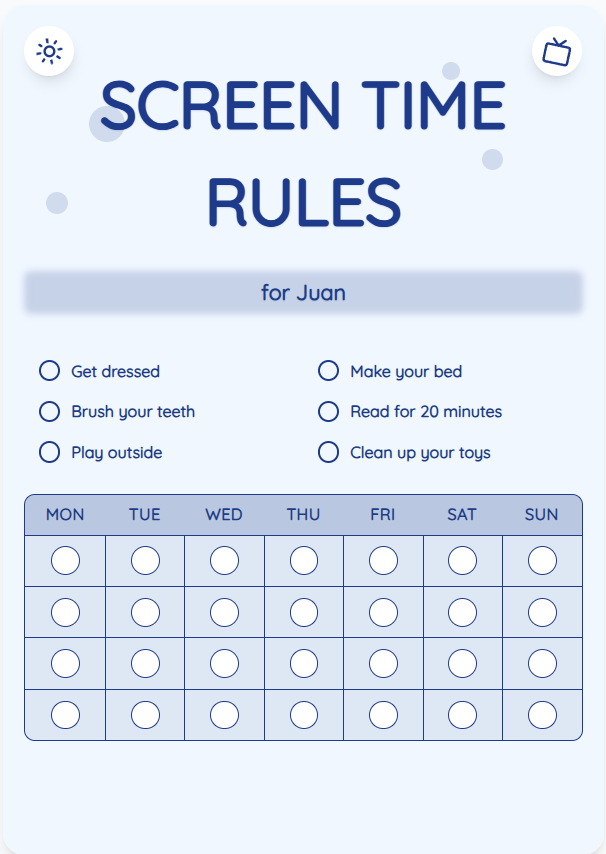How to Set Screen Time Limits on PC for Kids: A Parent's Guide
As a parent, navigating the challenges of managing screen time limits on PCs for your children can be overwhelming. Finding the right balance between technology use and other activities is crucial for their development. In this guide, we provide practical advice to help you establish healthy screen time boundaries and promote a harmonious tech environment at home.
See What Your Screen Time Chart Will Look Like
Here's an example of a beautiful, customizable screen time rules chart you can create for your family

Understanding the Importance of Screen Time Limits
Setting screen time limits is essential to ensure that your child's overall well-being and development are not compromised by excessive screen use. Research shows that prolonged screen time can have negative effects on children's physical health, mental well-being, and cognitive development. By establishing clear boundaries, you can help your child develop a healthy relationship with technology.
Effective Strategies for Setting Screen Time Limits
1. Create a screen time schedule: Establish dedicated time slots for screen use and non-screen activities. 2. Use screen time charts: Utilize visual aids like screen time charts to make the limits clear and easy to follow. 3. Set parental controls: Take advantage of parental control features on PCs to restrict access to certain apps or websites. 4. Encourage alternative activities: Promote outdoor play, reading, and creative pursuits as alternatives to screen time.
Put These Tips Into Action
Create a custom chart to implement these strategies with your child
Monitoring and Adjusting Screen Time Limits
Regularly monitor your child's screen time usage and be prepared to adjust the limits based on their behavior and needs. Encourage open communication about screen time rules and the reasons behind them. Be flexible but firm in enforcing the boundaries you've set.
Practical Tips for Success
- Create a designated screen time area in your home.
- Involve your child in setting their screen time limits to promote accountability.
- Use positive reinforcement when your child adheres to the set limits.
- Model healthy screen time habits for your child to emulate.
Frequently Asked Questions
How much screen time is appropriate for children aged 2-12?
The American Academy of Pediatrics recommends no more than one hour of high-quality screen time per day for children ages 2-5 and consistent limits for children aged 6 and older.
What are the signs of excessive screen time in children?
Signs of excessive screen time include irritability, difficulty sleeping, lack of interest in other activities, and declining academic performance.
How can I encourage my child to engage in non-screen activities?
Provide a variety of engaging non-screen activities such as sports, arts and crafts, board games, and outdoor play. Offer incentives for choosing non-screen activities over screen time.
By implementing these practical strategies and tips, you can create a healthy screen time routine that benefits your child's development and promotes family harmony. Visit ScreenTimeRules.com to easily generate personalized screen time charts tailored to your family's needs.
Ready to Transform Your Family's Screen Time?
Join thousands of parents who have successfully managed screen time with our customizable charts.
